The Raketa Baikonur Watch
A tribute to 60 years of Russian space conquest on the wrist.

When having in mind the association between space exploration and watchmaking, many will think about the Speedmaster Professional Moonwatch, the Bulova Moon Chronograph the Fortis Official Cosmonauts Chronograph. And rightfully so, as these watches are probably the most popular space watches. Yet, there were many more timepieces to make it into space, or specifically designed for astronauts/cosmonauts. One of them comes from a country that has been a pioneer in everything related to space, Russia. Developed in 2016 with cosmonaut Sergei Krikalev, one of the men who contributed the most to the space conquest, this piece is the Raketa Baikonur Watch and today we go hands-on with it.
60 years of space conquest
A couple of weeks ago, mankind celebrated the 60th anniversary of the first-ever manned spaceflight. Indeed, on 12 April 1961, right in the middle of what will be known as the space race, Russia, through the Vostok program, will be the first nation worldwide to send a man into outer space – something that was and still is considered a milestone of space exploration. Onboard his capsule Vostok 1, launched from the Baikonur Cosmodrome, he completed one orbit of Earth before returning to Earth in Kazakhstan… And he did it after he ejected from the descending capsule and landed using a parachute. Something we don’t see anymore these days (obviously). Gagarin soon became a celebrity, both in Russia and internationally, and was awarded many medals and titles, including Hero of the Soviet Union, his nation’s highest honour.
But something else should be mentioned. And, because you’re reading MONOCHROME, it’s about watches. During his historic flight, Gagarin was wearing a “Sturmanskie” known as a special issue watch for Soviet Air Force pilots – more on the topic here, at Worn & Wound. What’s even more interesting is what comes after his flight around Earth. Indeed, in the early 1960s, the Petrodvorets Watch Factory and the Soviet Union felt the need to dedicate a brand in honour of this achievement, creating the brand “Raketa,” which could be translated by space rocket in English. And if Raketa was not onboard the first manned spaceflight, it has since then accompanied the Russian space conquest by engineering watches for cosmonauts and Roscosmos.
The Raketa Baikonur Watch
The Raketa Baikonur Watch is not a watch that is vaguely inspired by space exploration. It is a watch with true credentials and is fully legitimate in this field. Indeed, it is the result of a collaboration with cosmonaut Sergei Krikalev, one of the most experienced men in the world for space exploration, and one of the greatest contributors to this field. Indeed, Krikalev holds one of the records for the number of stays in space (6 stays in total) and he ranks third to Gennady Padalka and Yuri Malenchenko for the amount of time in space, with a total of 803 days, 9 hours, and 39 minutes – indeed, almost 2.5 years spent in outer space.
He’s actually nicknamed in Russia the “Record Man.” He is also the cosmonaut who was stranded for 6 months in space after the Soviet Union collapsed in 1991 until Russia figured out how to bring him back to Earth in 1992 – which gave him another nickname, as “the last Soviet citizen.” With such experience in space, he was the right person to ask what kind of watch is needed by cosmonauts.
The Raketa Baikonur is a watch made to answer the needs of these pioneers, who (according to him) don’t really need sophisticated complications such as chronographs, but essential functions such as a 24-hour movement to allow them to distinguish night from day in the International Space Station (ISS). Indeed, because the International Space Station circles the Earth every 90 minutes, astronauts and cosmonauts have 16 sunrises and sunsets every 24 hours.
The 24-hour function is somehow a speciality of Raketa, which also offers this function in the Polar watch for explorers of the Great North (since there is no sunrise-sunset cycle in the Antarctic), or in the Leopard 24 that has been developed with a submarine captain and that uses original metal from a Leopard Akula class nuclear submarine – another environment where distinguishing night from day is impossible. We’re talking hallmark complication for the brand here.
But there’s more to this watch. Its other important feature is its bezel, which works in combination with the 24h display – the latter can serve on Earth as a solar compass. This is why the insert of the Raketa Baikonur Watch is equipped with markers indicating the 4 cardinal points (in Russian) and the 360 degrees as in a normal compass. As explained by the brand, “This solar compass would be very useful if your Soyuz descent module should fail to land at the right spot in the deep taiga forest and you would need a compass to find your way back to civilization (which actually already happened in the Soviet days)” On this watch, the bezel is made of titanium, is bidirectional and has a continuous, smooth motion (no clicks) and the compass is printed in white on a black insert.

Now that we’ve covered the functions, let’s talk about the watch itself. The Raketa Baikonur is a 43mm stainless steel watch with a typical pilot’s or helmet ovoid shape, where the lugs are integrated into the casebands. The watch appears quite large on paper but the thickness is acceptable at 13.15mm and the lug-to-lug measurement is 47mm, which remains wearable even for smaller wrists. It isn’t a small watch but it remains comfortable.
It is also a robust watch made for action. Its case is brushed on top surfaces, with a nice bevel on the side, and polished on the flanks. The bezel has deep notches, making it easy to rotate, and the crown is voluntarily oversized, once again to be easily actuated. The dial is protected by a sapphire crystal, while the steel screwed caseback features a mineral see-through crystal. Even though the watch is purpose-built for space exploration, it is water-resistant to 200 metres.
The main point of this watch is, as you’d expect, its dial. While 24-hour watches are not really intuitive at first sight, they do really make sense in the present context. Also, the dial of the Raketa Baikonur Watch might appear quite busy but in the end, it is pretty easy to read. The base is a nice, anti-reflective blue colour with a matte texture. There are 3 distinctive tracks, all with different colour and fonts. The outer ring of the dial is dedicated to the minutes and seconds, with a precision track. Then come the hours, with bold even numbers applied on the dial. They feature a blue outline and are largely filled with Super-Luminova. In typical Russian tradition, a big zero marks the beginning of a new cycle. Finally, an inner track with red numerals marks the odd numerals of the 24-hour track.
Inside the case is a movement made in Russia, in Raketa’s manufacture. In addition to the 24-hour display, this movement features another purpose-built function, in order to reinforce its robustness. This calibre 2624A is indeed an automatic movement, which has no use in the space station. Indeed, its automatic winding system will obviously not work properly in the absence of gravity. As such, cosmonauts need to regularly hand-wind their watch to keep them running. In most other automatic watches, this would lead to a quick wearing out of the little wheels in the automatic winding module. For this reason, Raketa has developed a special system that disengages these wheels when you wind the movement manually, thus avoiding their premature use while the watch is in space.
Other than this, we’re looking at a movement typical of the brand’s production, made to last. Simple and robust in its conception, it beats at a slow pace of 2.5Hz and can store up to 40 hours of power reserve. It is adjusted to -10/+20 seconds/day. The matte-finished bridges and oscillating weight are decorated with printed celestial constellations and a cosmonaut that flies in open space. It also reads the famous words pronounced by Gagarin when he flew to space, meaning “Let’s go!” in English.
The Raketa Baikonur Watch is worn on a blue leather strap (as seen here), a black silicone strap or a 3-link stainless steel bracelet. For the 60th anniversary of the first space manned flight and of the Raketa brand, each Raketa Baikonur Watch is delivered with a Russian space insignia.
The Raketa Baikonur is priced at EUR 1,200 on leather or silicone strap and EUR 1,350 on steel bracelet. It can be ordered from the brand’s website, with worldwide delivery.

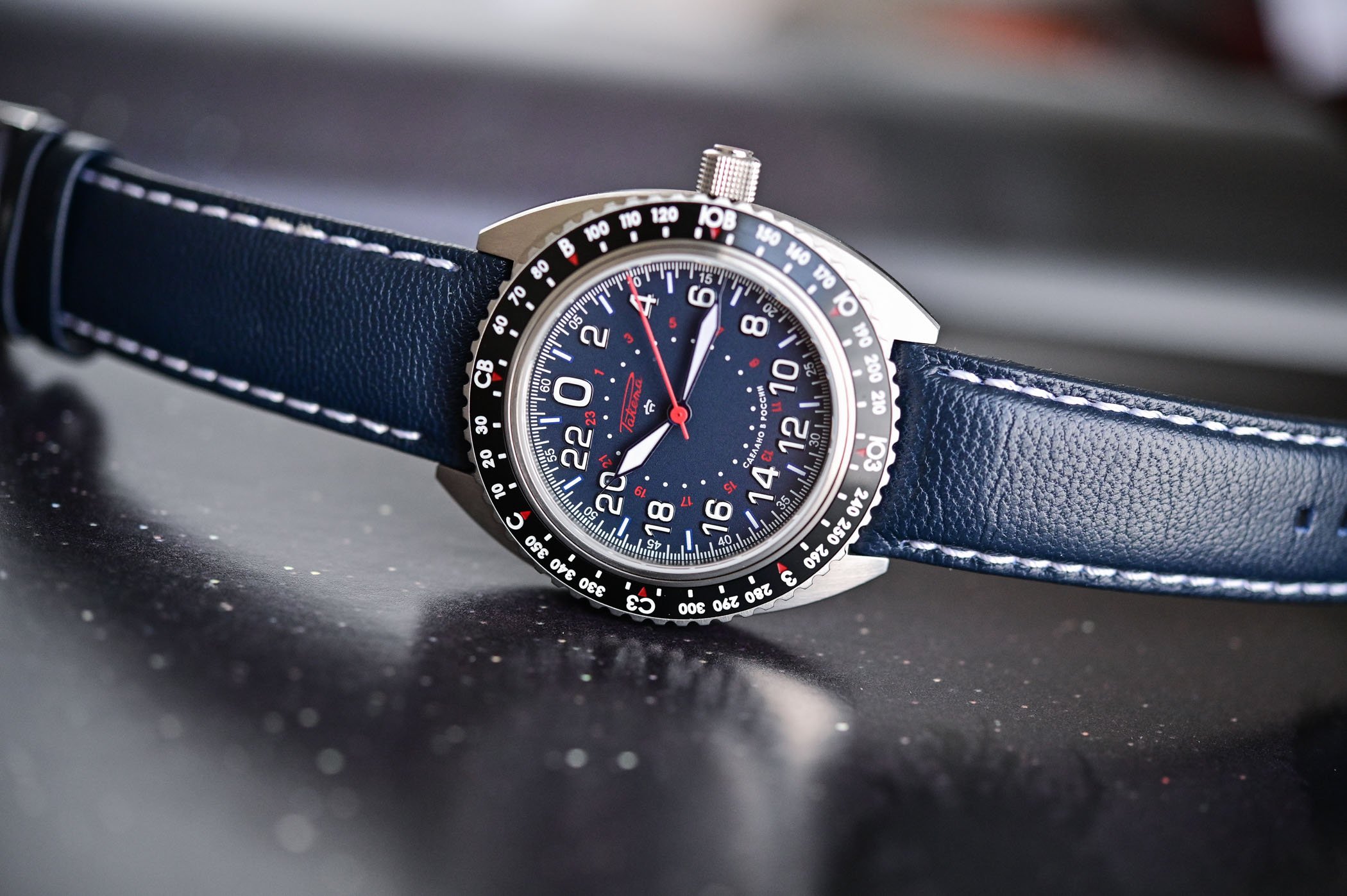
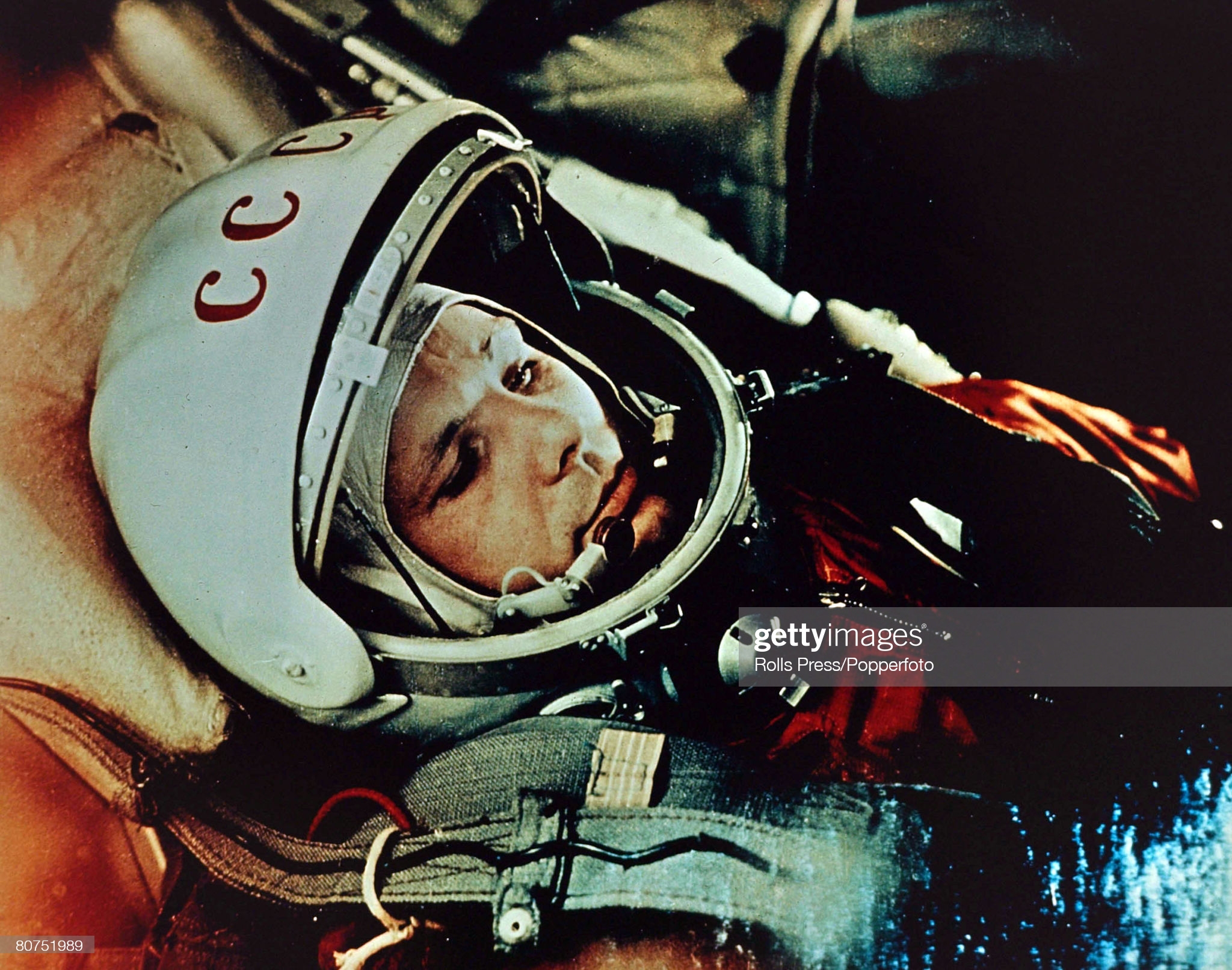

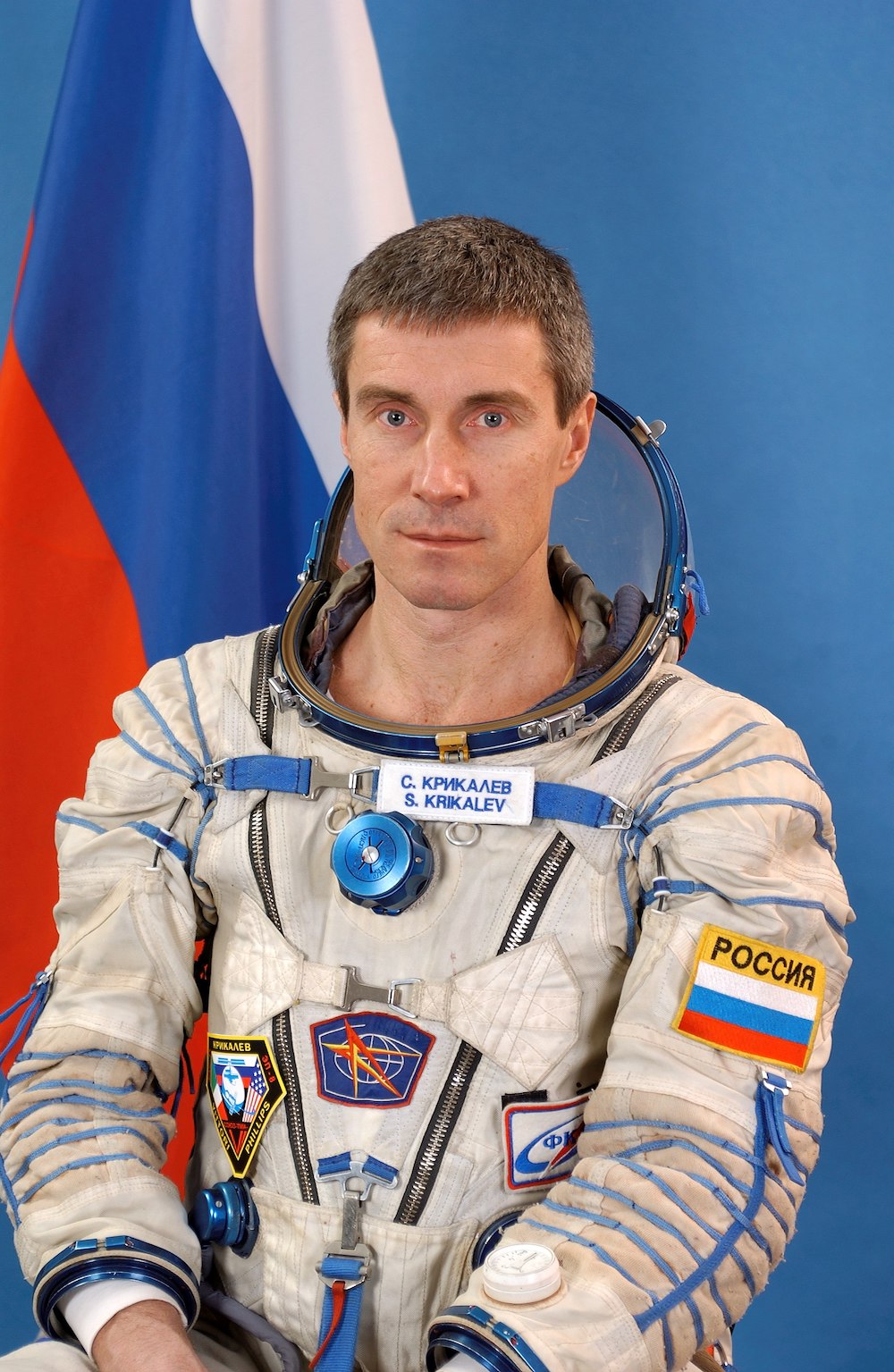
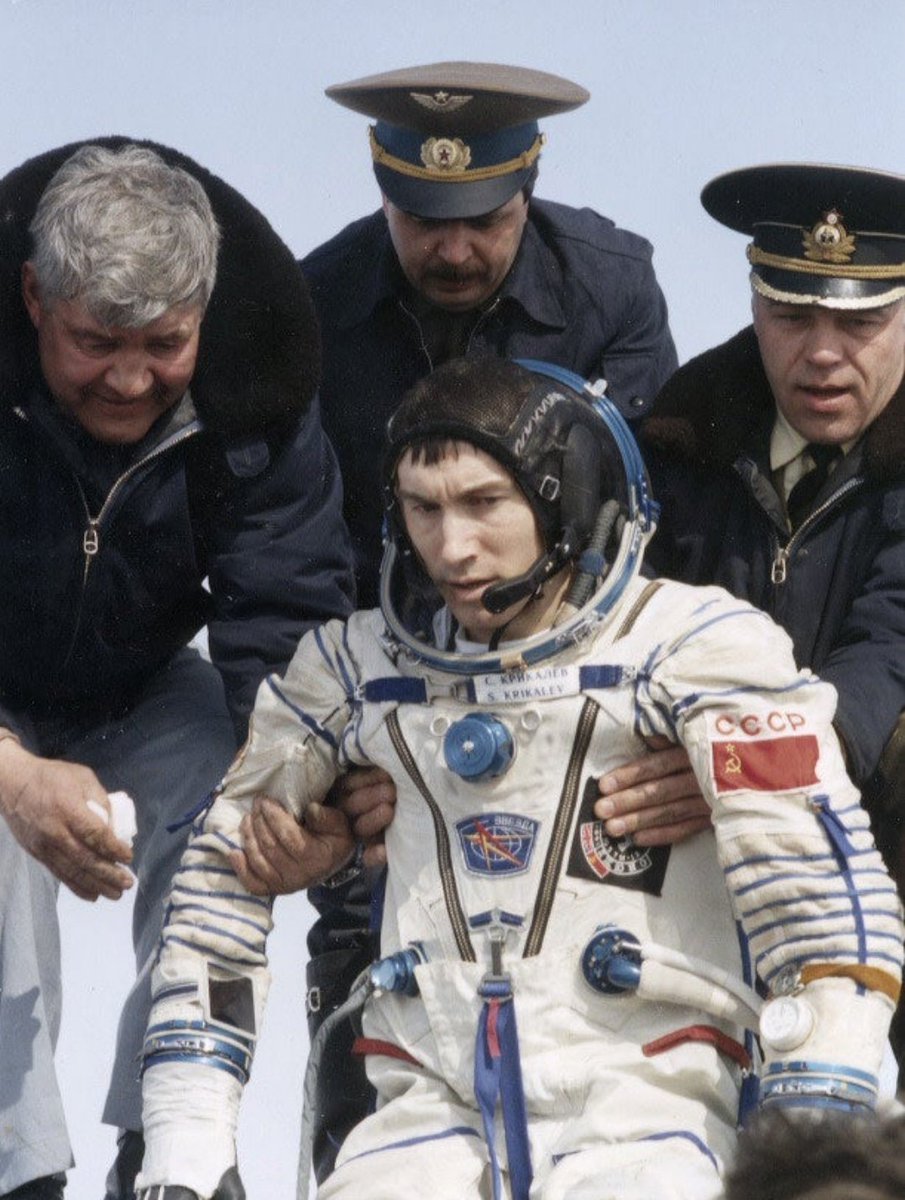

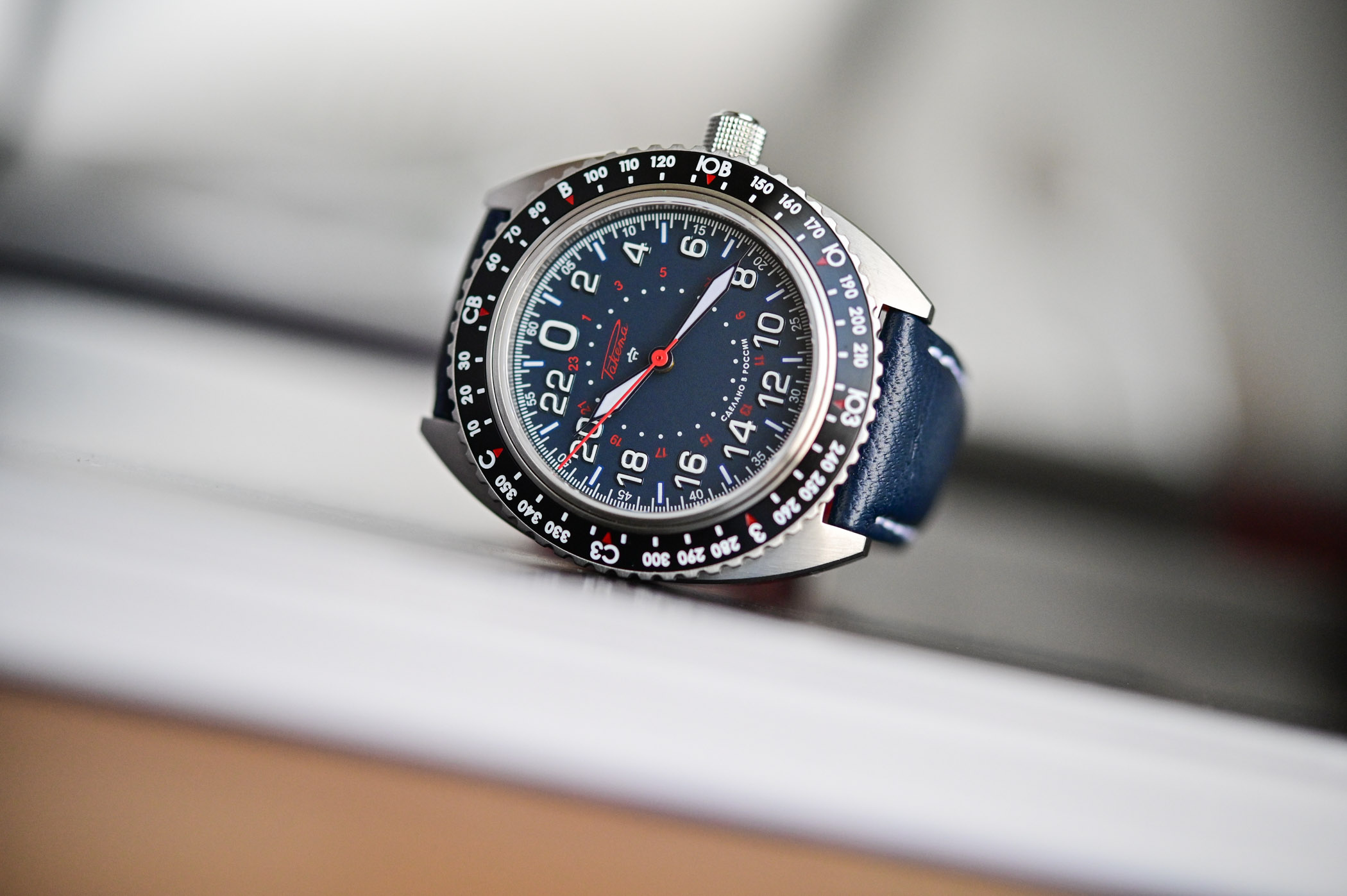
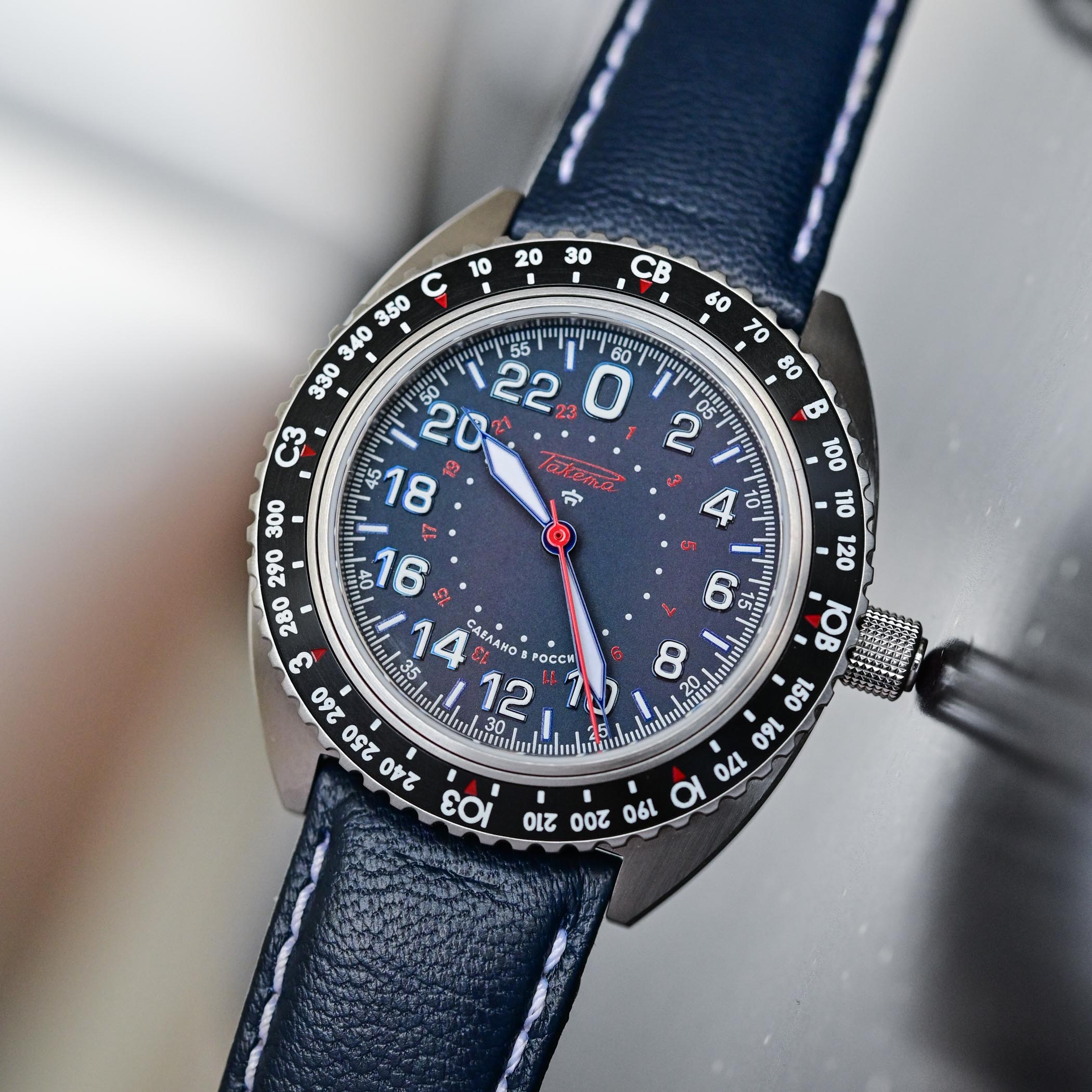
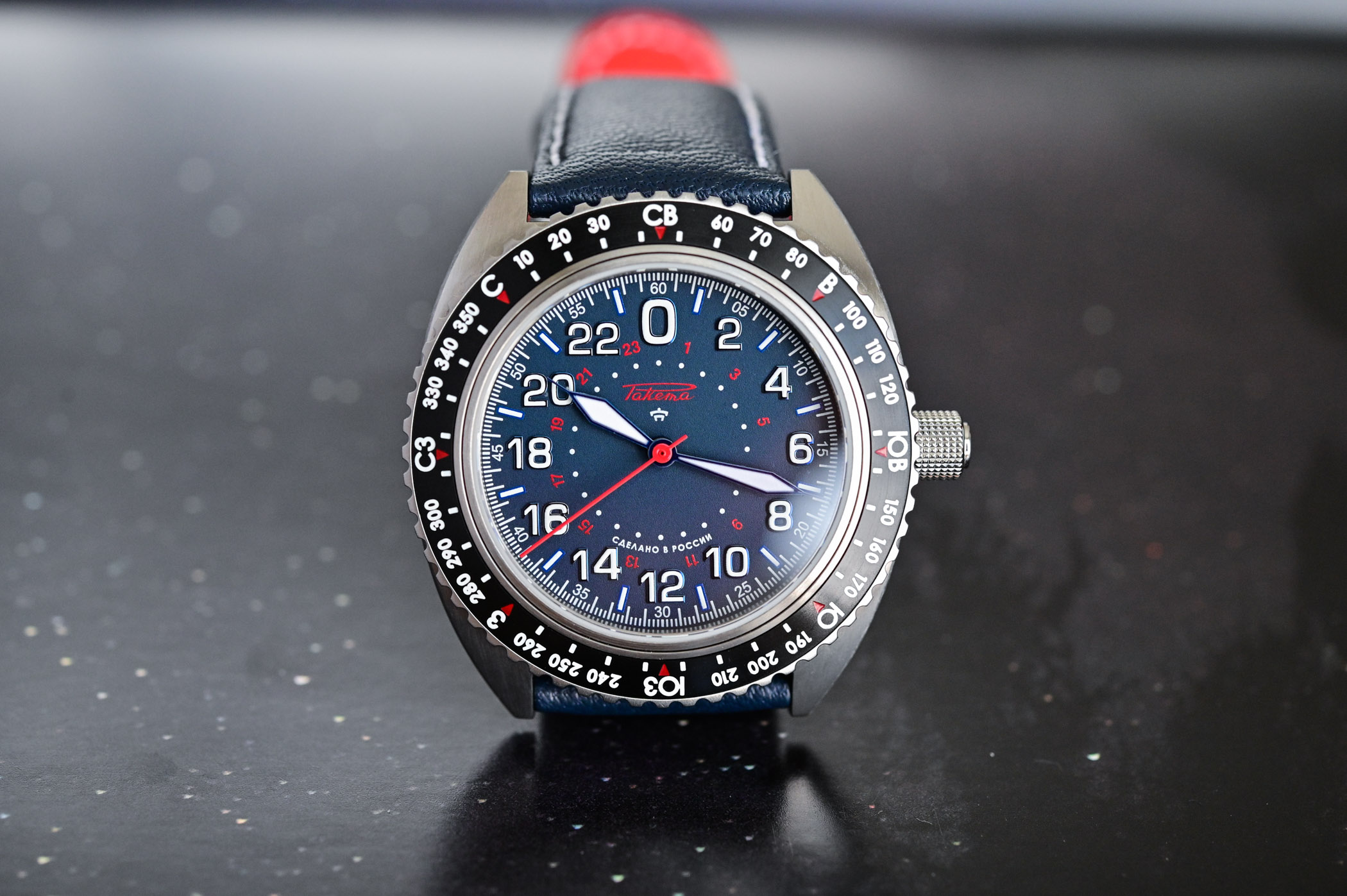
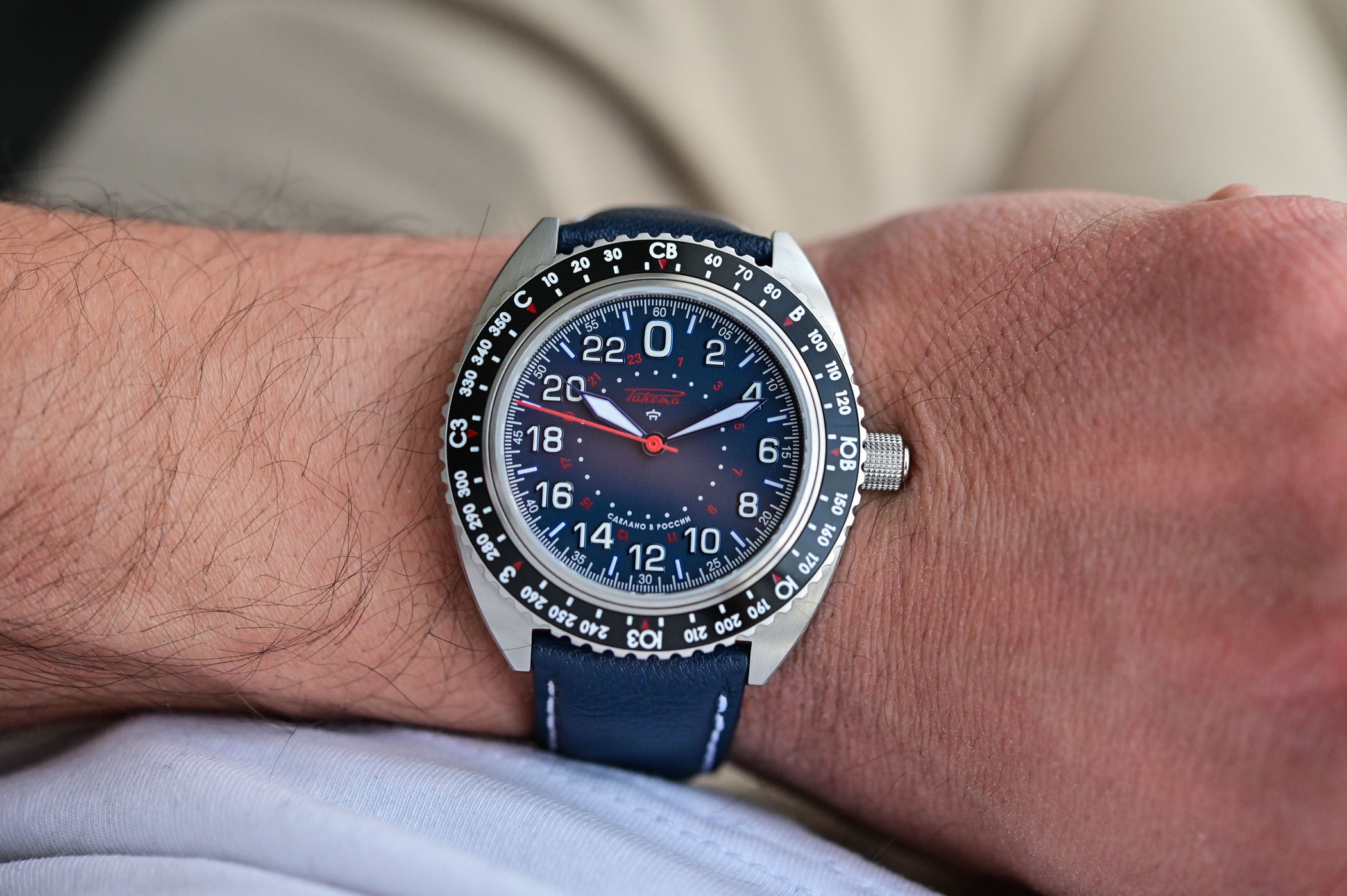
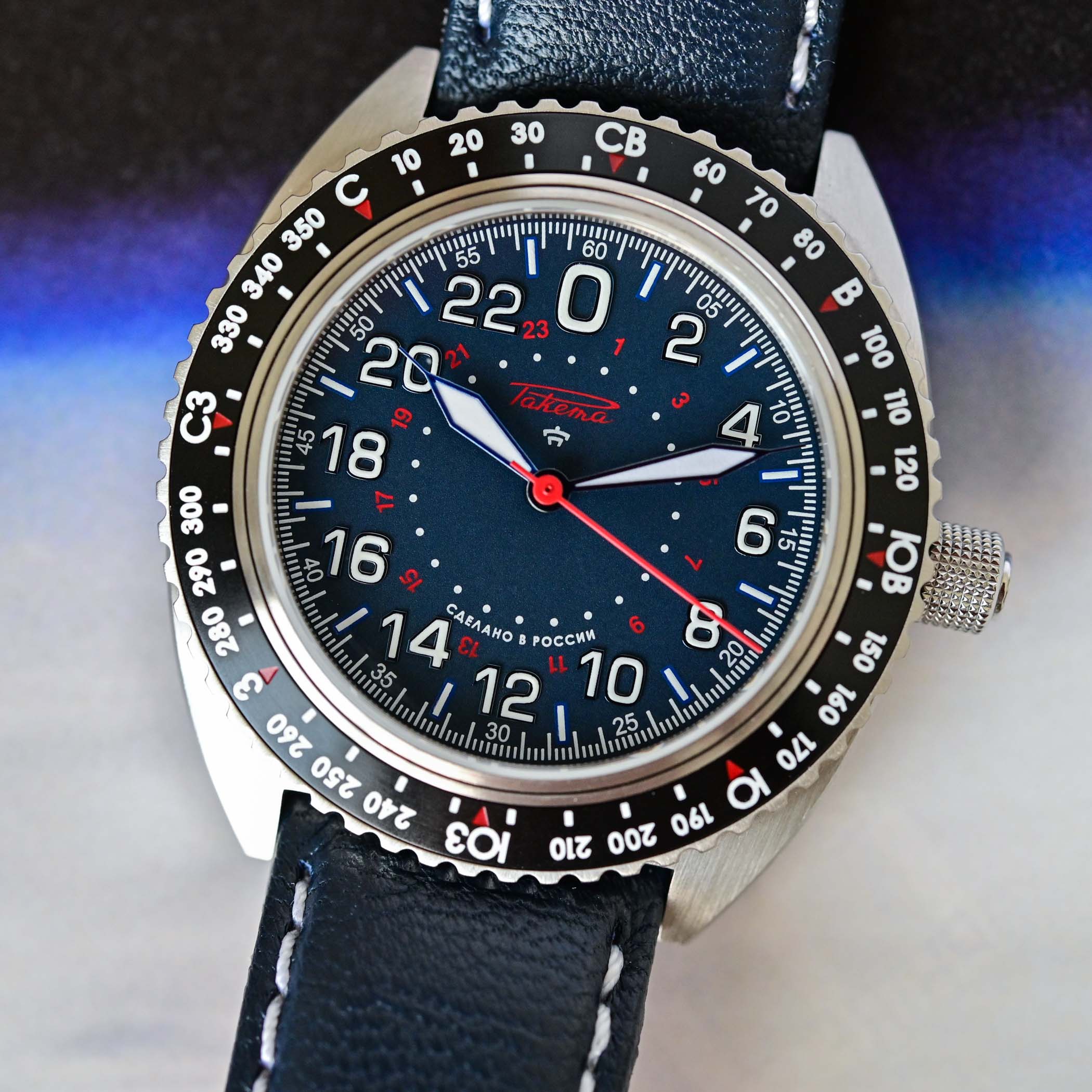
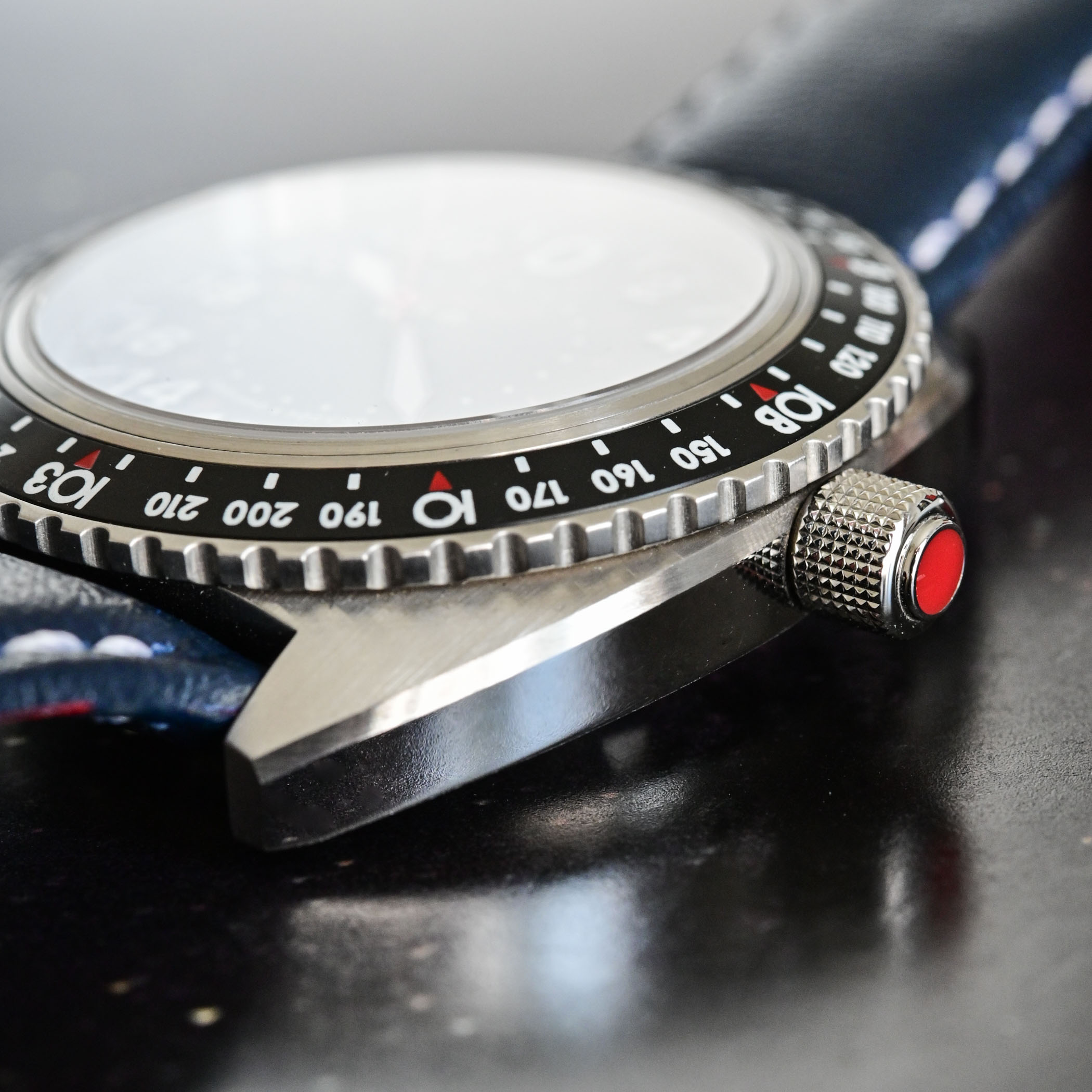
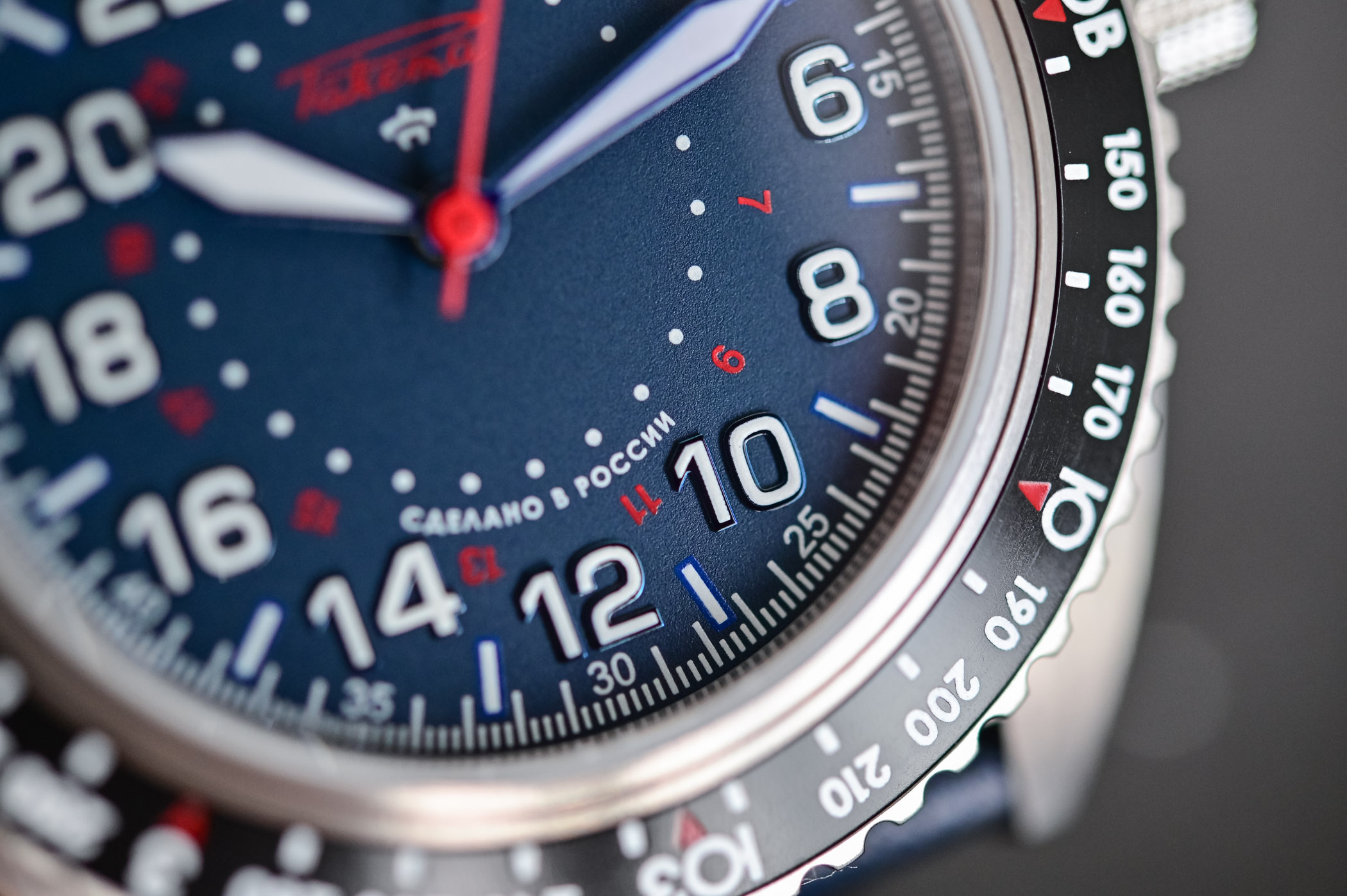
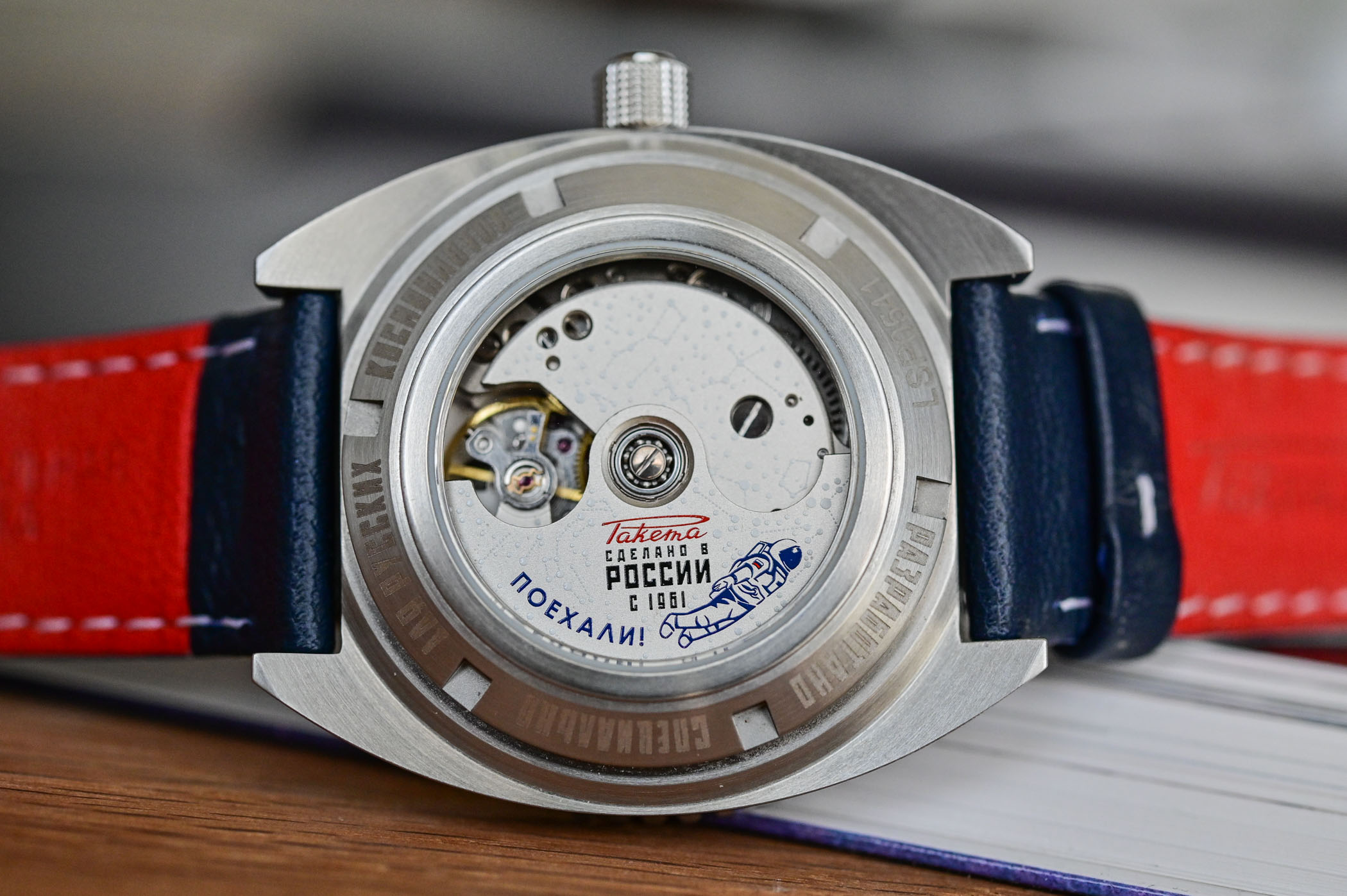




2 responses
That crown is going to dig in ,why so long?
Automatic watches do wind automatically in space. It is inertia that winds them, not gravity.